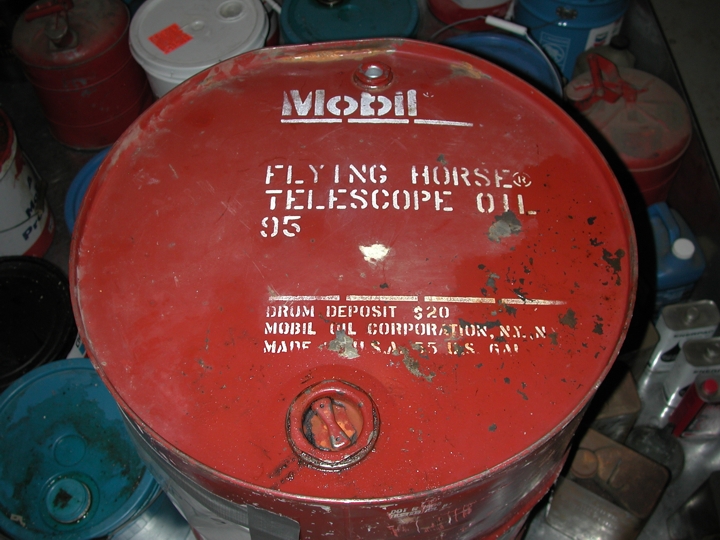 Mobile Oil was pretty proud of the fact that they made the oil for the biggest telescope in the world. They even took out full page ads in magazines to show off their fine product.
Mobile Oil was pretty proud of the fact that they made the oil for the biggest telescope in the world. They even took out full page ads in magazines to show off their fine product. Alas, Flying Horse Telescope Oil is no more. At Palomar we have moved on to a modern, synthetic (and fire resistant) oil.
Alas, Flying Horse Telescope Oil is no more. At Palomar we have moved on to a modern, synthetic (and fire resistant) oil.Just like the oil in a car, it doesn't last forever and needs to be changed out from time to time. How often do we change our oil? Every 5,000 galaxies? Nah, we changed it yesterday and from what I hear it was last done about 4 years ago. That's waaay more than 5,000 galaxies.
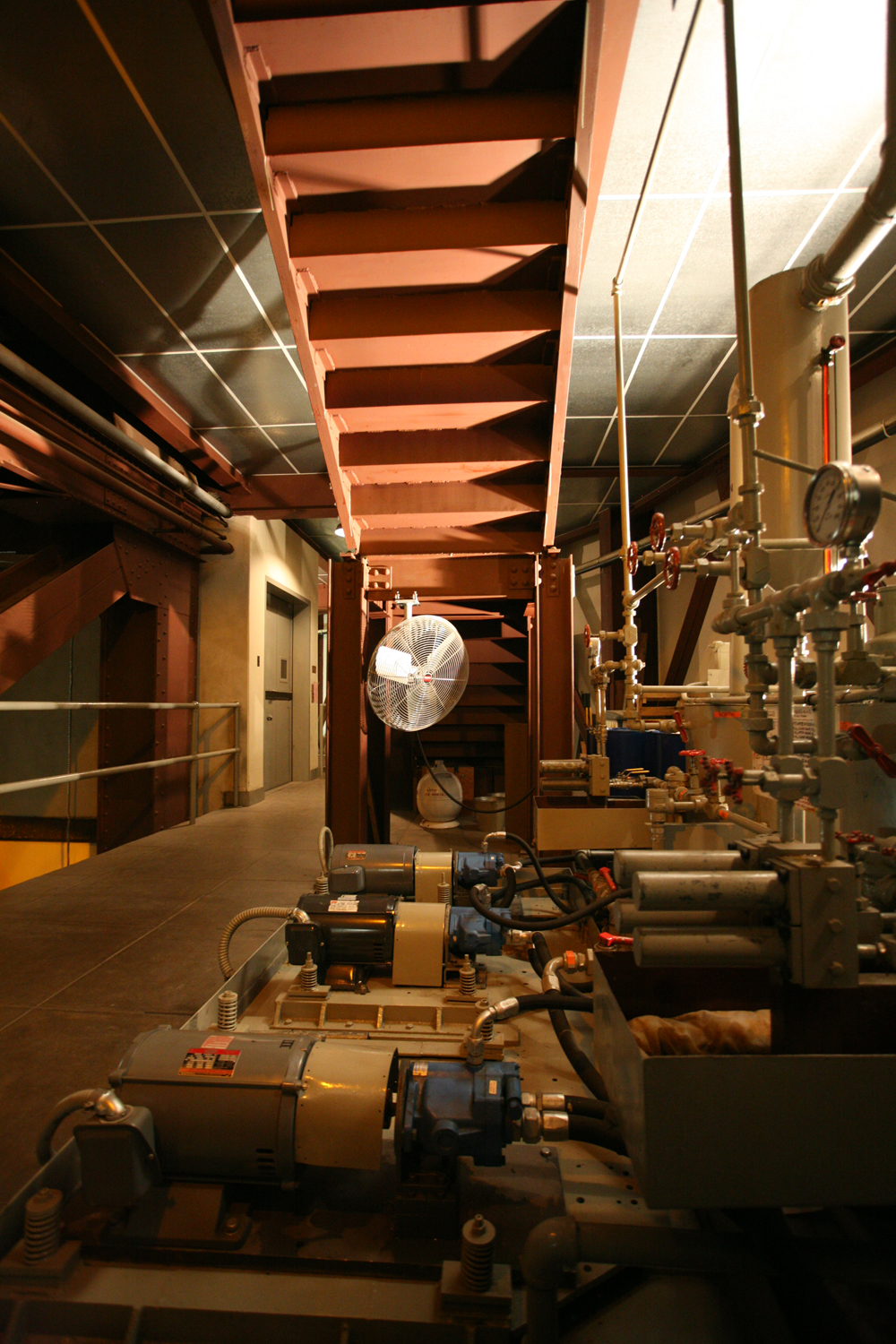
The 200-inch telescope has three oil pumps that push oil to the north and south telescope bearings. We have three pumps. One for the south (foreground), one for the north (in the back), and one that can be switched to handle the north or the south (middle).
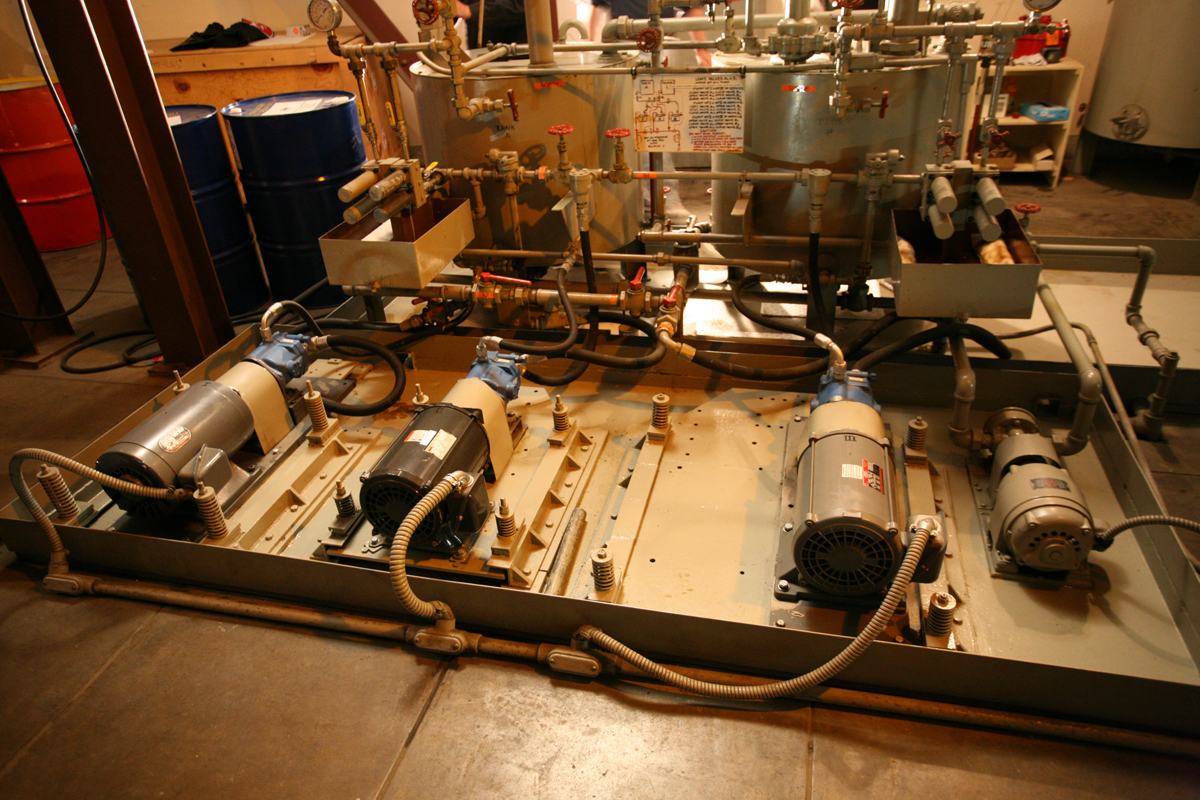
From the perspective above that's the north pump on the left and the south on the right. Behind the pumps, almost lost in the pipes and valves, are the two oil reservoirs that hold the oil for the two bearings. Here is the opened reservoir for the north bearing, where the oil was changed yesterday.
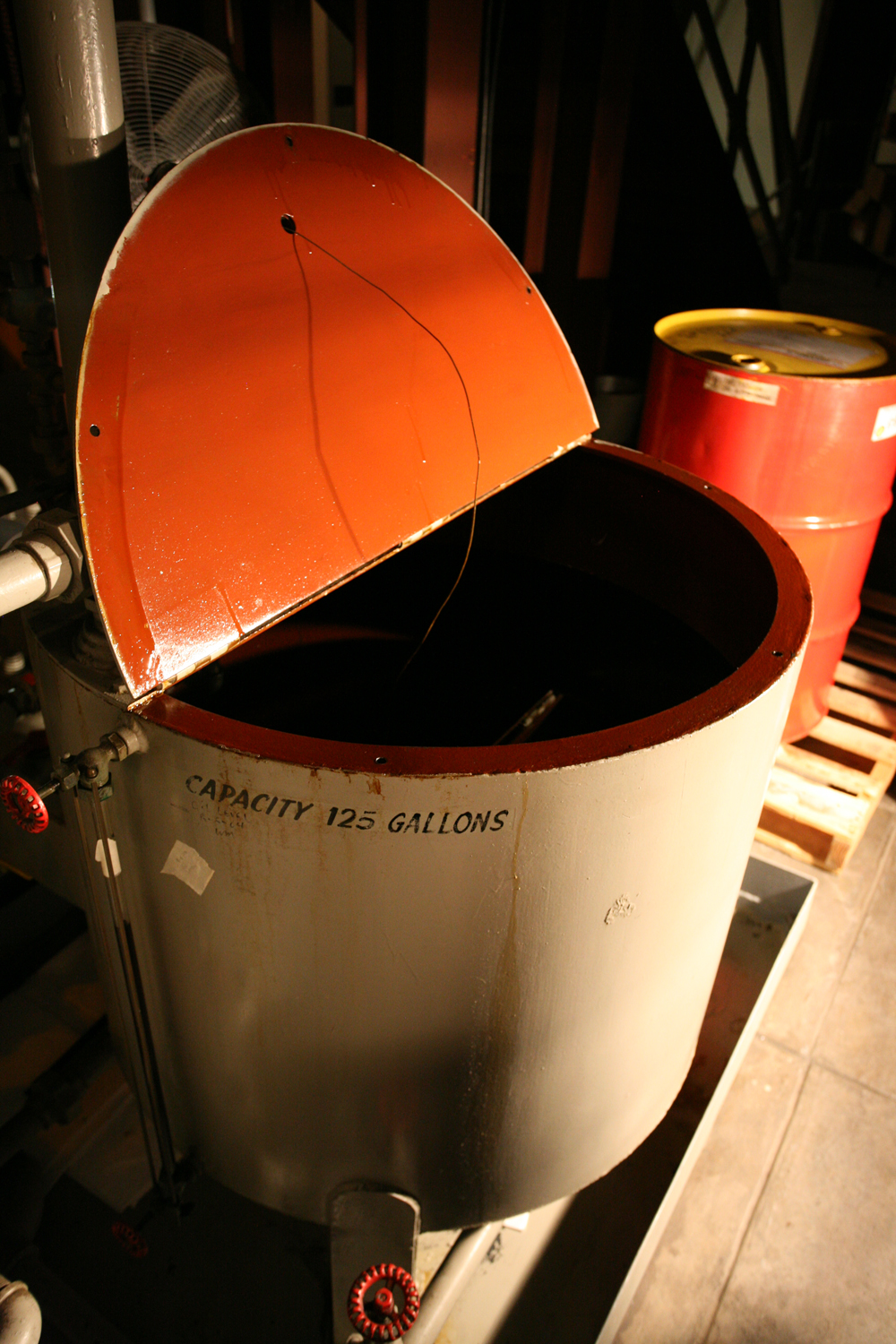
The task was simple. First pump the oil out of the reservoir into a drum for recycle.
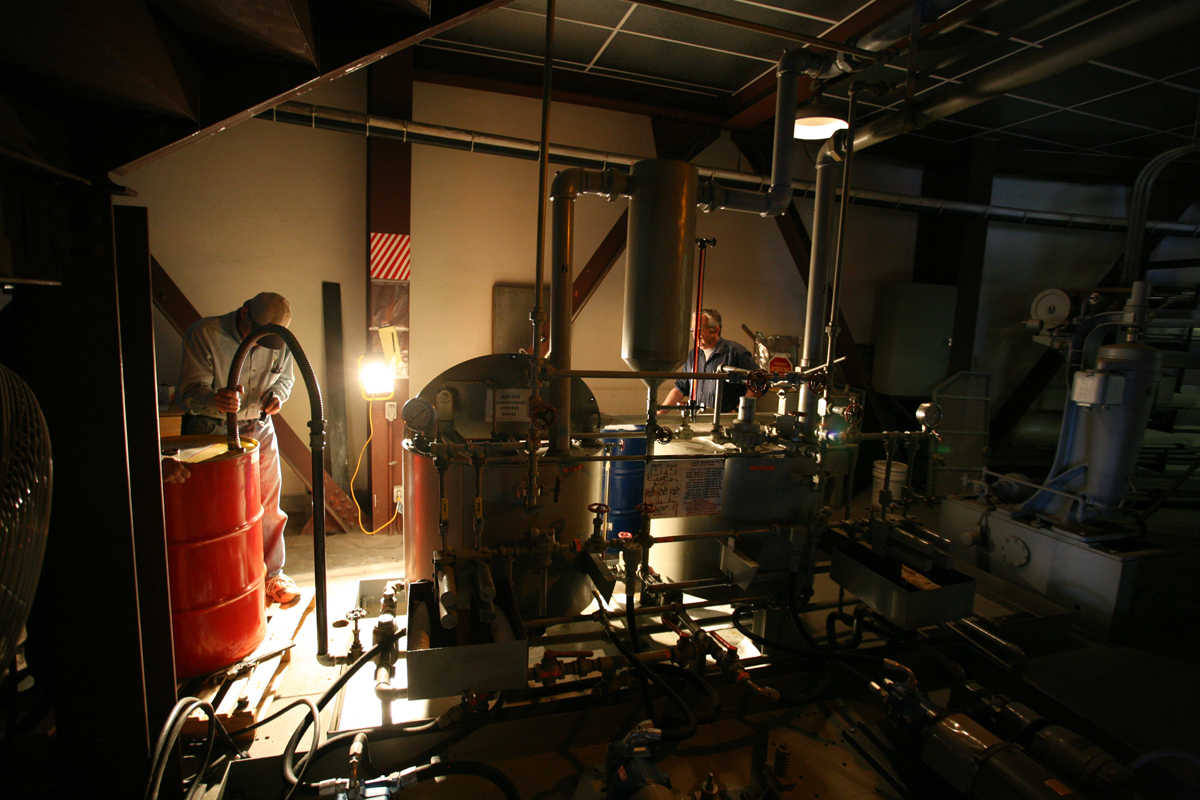
Here is the sludgy insides of the empty reservoir:
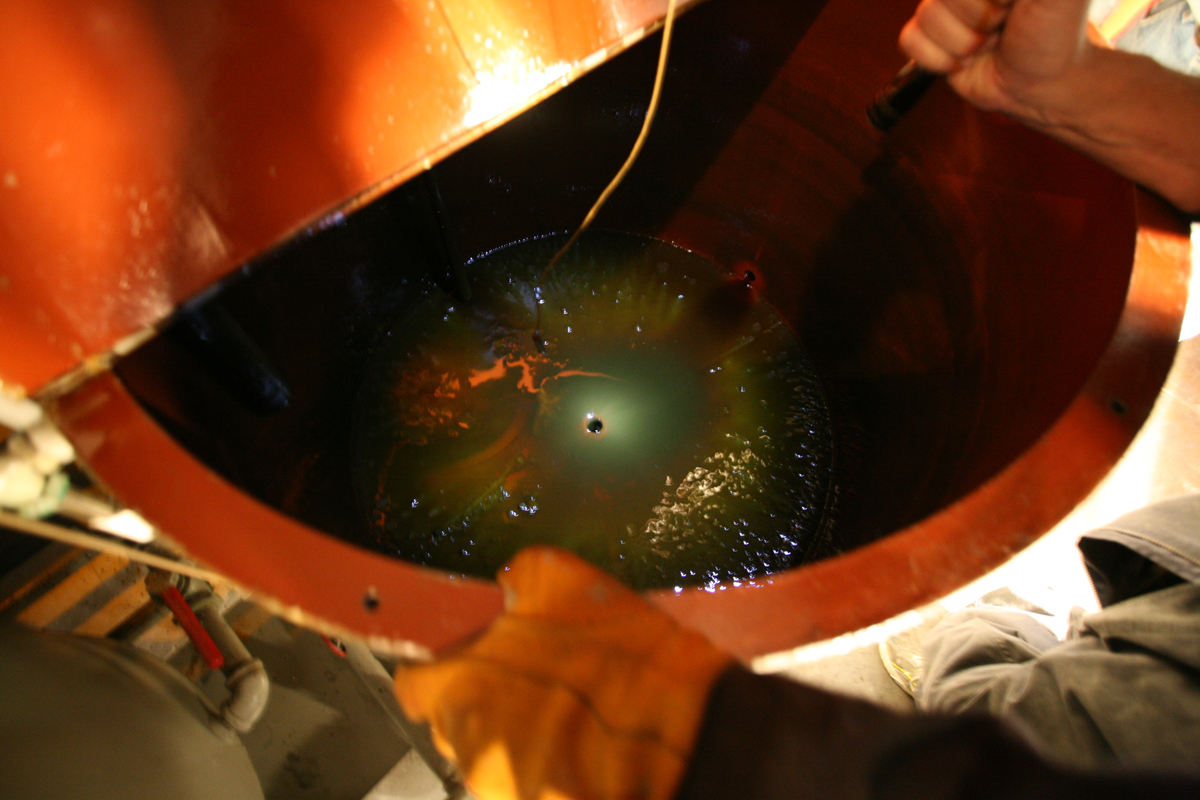 After the oil is pumped out it is time to wipe down the inside and refill with nice, fresh oil.
After the oil is pumped out it is time to wipe down the inside and refill with nice, fresh oil.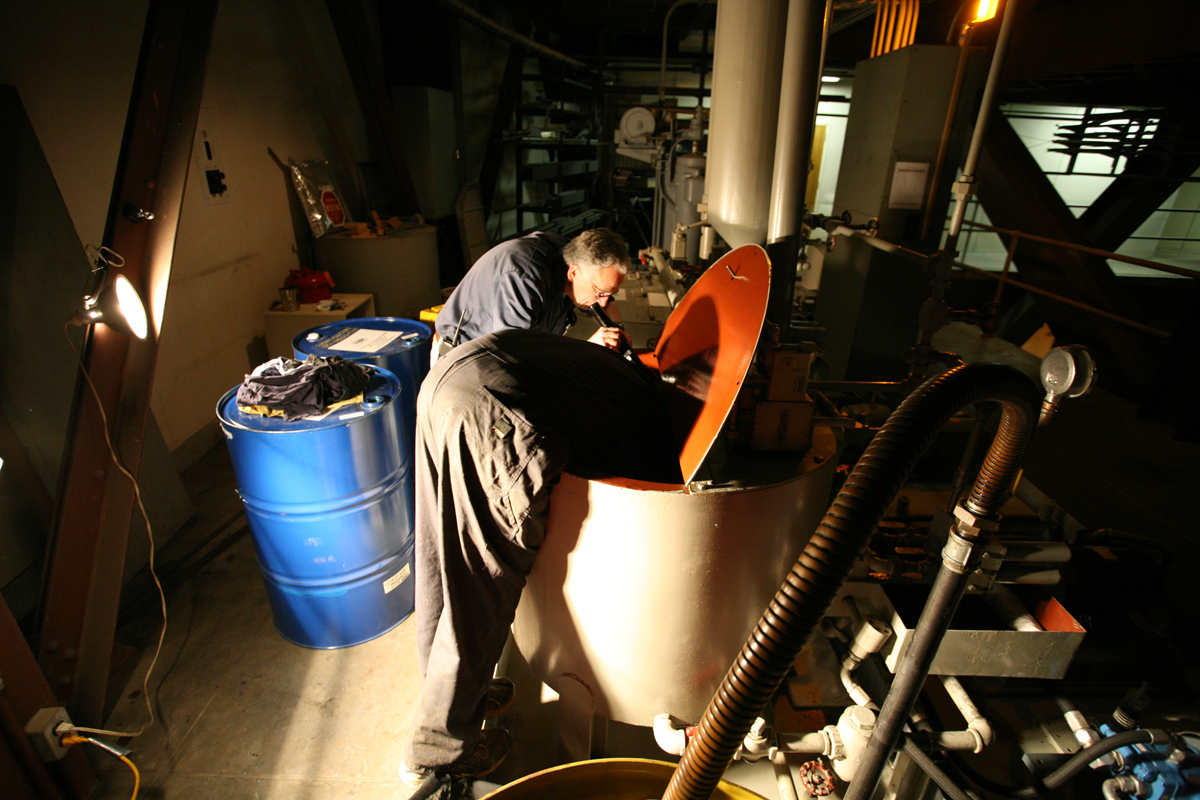 It is a dirty job, but somebody's gotta do it. The process was most certainly not done in 30 minutes (or less), but all-in-all it was a good oil change and by mid afternoon everything was ready for another night of operating the 530-ton telescope.
It is a dirty job, but somebody's gotta do it. The process was most certainly not done in 30 minutes (or less), but all-in-all it was a good oil change and by mid afternoon everything was ready for another night of operating the 530-ton telescope.So what oil do we use now? Quintolubric 822. Many of the kids that come to visit the observatory tell me that the observatory smells like crayons. Kids, that's not crayons. That's the smell of telescope oil.



1 comment:
As one who is fascinated by the mechanical design of the Hale telescope, it's great to get an insider's look behind the scenes. The glimpses of the "inner workings" are a rare treat. Keep 'em coming.
Post a Comment